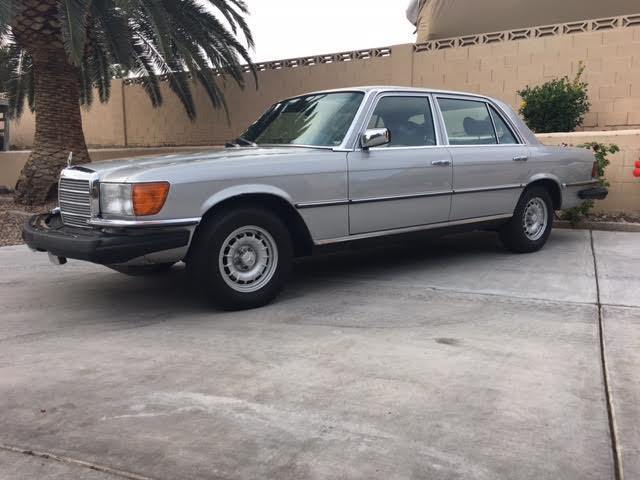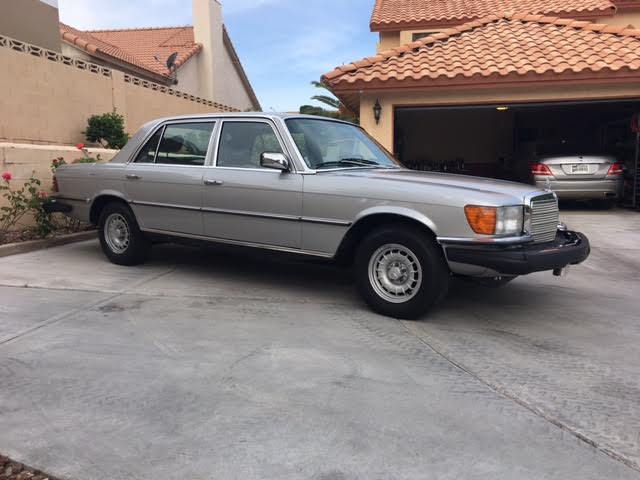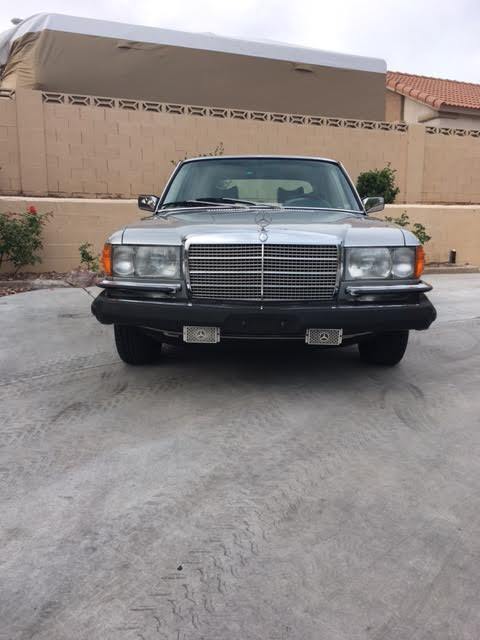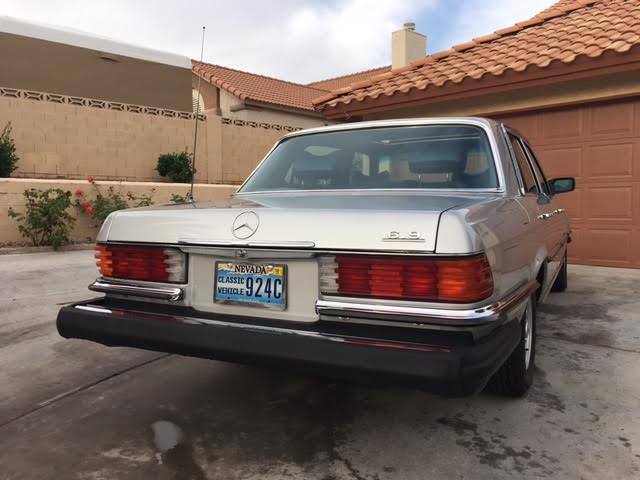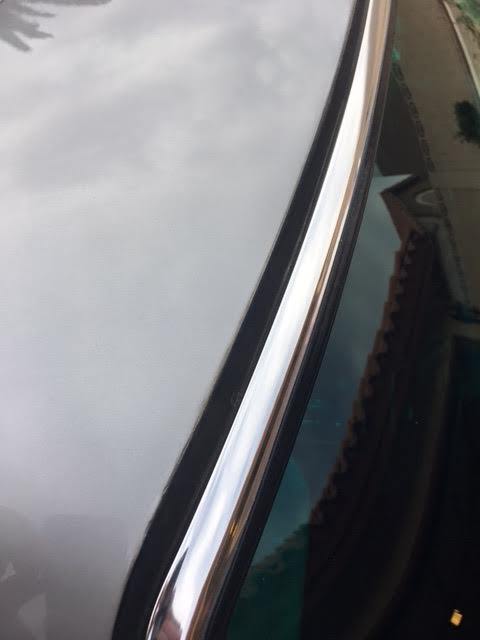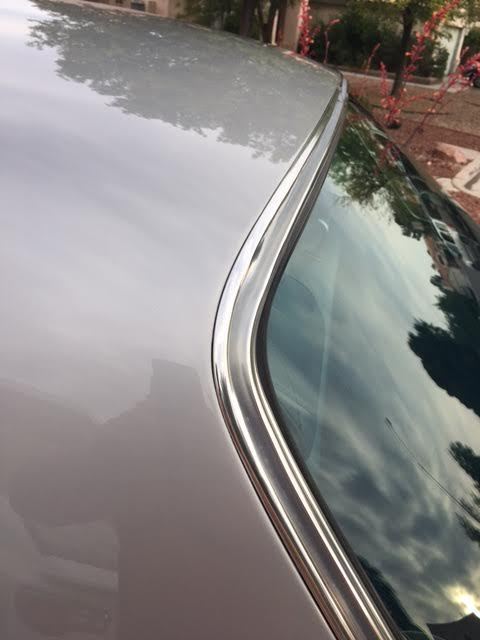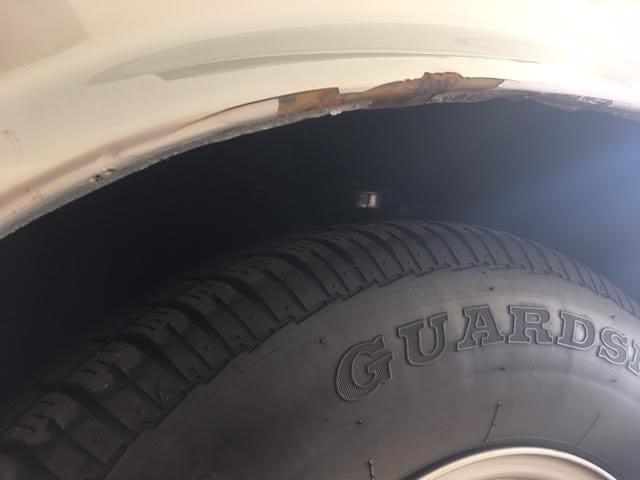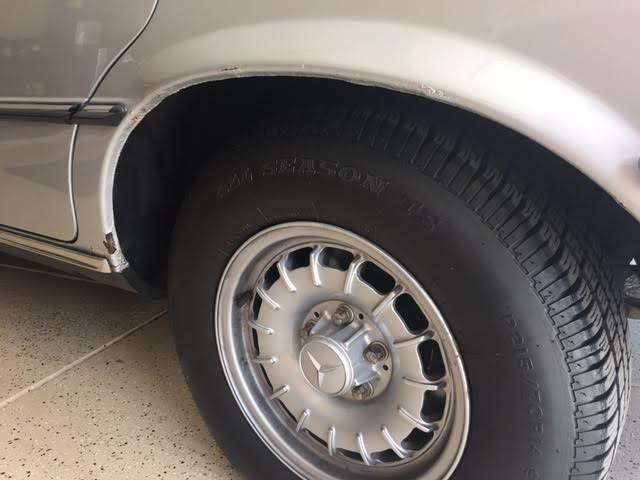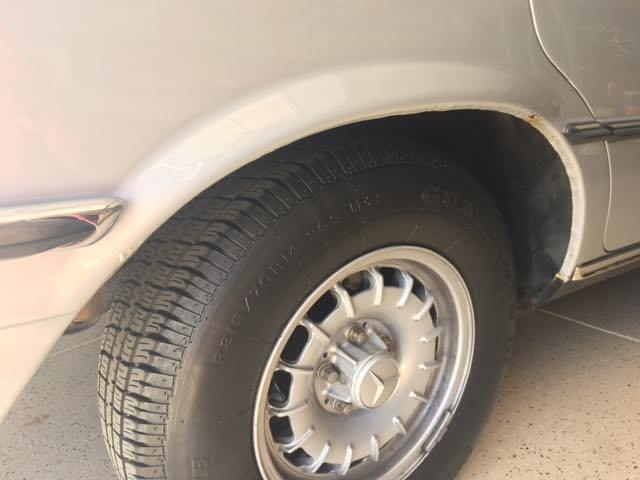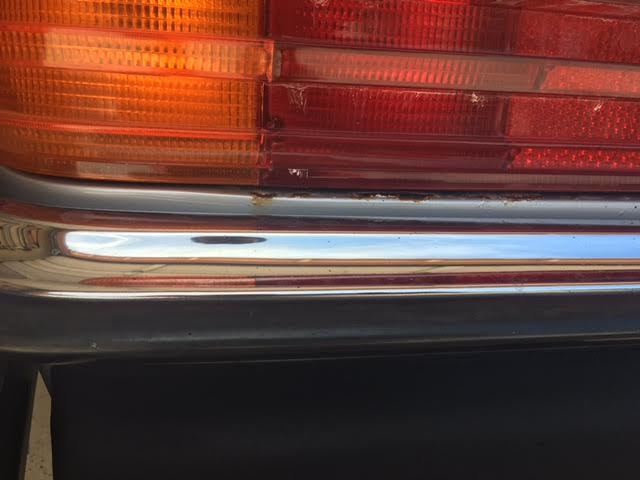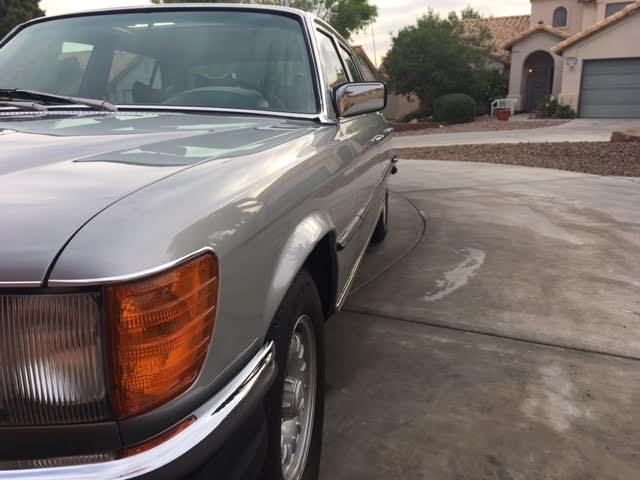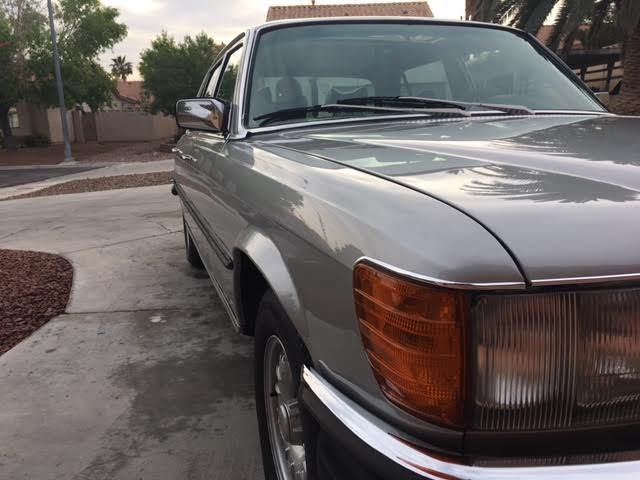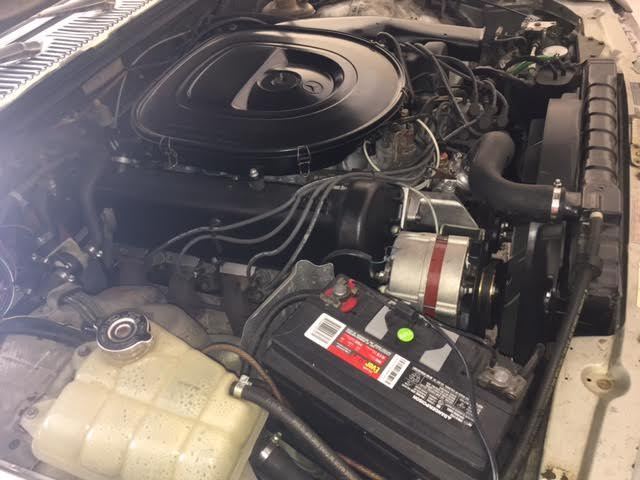1979 MERCEDES 450SEL 6.9
- Make: Mercedes-Benz
- Model: S-Class
- SubModel: 450SEL 6.9
- Type: LUXURY SEDAN
- Trim: LUX
- Year: 1979
- Mileage: 150,000
- Color: Brown
- Engine size: 6.9
- Number of cylinders: 8
- Fuel: Gasoline
- Transmission: Automatic
- Drive type: RWD
- Interior color: Tan
- Vehicle Title: Clear
- Interested?
1979 Mercedes-Benz S-Class LUX Description
FOR SALE TWO 1979 MERCEDES 450SEL 6.9, NO TITLES, NO REGISTRATIONS, BILL OF SALE ONLY, FOR PARTS OR RESTORATION. RARE CARS, ONLY 1816 WAS IMPORTED IN US, NOT MANY LEFT! FULL RESTORATION NEEDED. YOU CAN TEXT ME OR CALL ME FOR THE DETAILS 6308884 EIGHT 87.The 6.9 was the first Mercedes-Benz to be fitted with the hydropneumatic self-levelling suspension system introduced by Citroën in 1954, unlike the 600 and 6.3 which employed air suspension. [5]
The benefit of this arrangement is progressive springing. The more the enclosed air in the suspension is compressed, the more difficult it is to compress; thus the suspension rate changes in proportion to the load.[5]
Using a combination of fluid-filled struts and nitrogen-filled pressure vessels or "accumulators" in lieu of conventional shock absorbers and springs, the system was pressurized by a hydraulic pump driven by the engine's timing chain. Compared to the new Mercedes-Benz system, Citroën's was belt-driven, exactly like a conventional power steering pump; failure of the Citroën system thus might result in loss of suspension. The 6.9 was shipped with hard rubber emergency dampers that served as temporary springs and allowed the car to be driven in the event of a hydraulic failure. The special hydraulic fluid required by the system was stored in a tank inside the engine compartment. Ride height could be altered by a dash-mounted push-pull knob under the speedometer that raised the car an additional two inches (50mm) for increased ground clearance.
The suspension system gave the 4200 pound (1900kg) car the benefits of both a smooth ride and handling that allowed it, in the words of automotive journalist David E. Davis, to be "tossed about like a Mini." The car also featured a model W3B 050 three-speed automatic transmission unique to the 6.9 and a standard ZF limited slip differential both for enhanced roadholding performance on dry pavement and enhanced traction in inclement weather.Four-wheel disc brakes and four-wheel independent suspension were standard across the W116 model range.
The engine was a cast iron V8 with single overhead camshafts operating sodium-filled valves against hardened valve seats on each aluminium alloy cylinder head. Each hand-built unit was bench-tested for 265 minutes, 40 of which were under full load. Bosch K-Jetronic electromechanical fuel injection was standard at a time when fuel-injected cars were uncommon. As in all Mercedes-Benz automobile engines, the crankshaft, connecting rods and pistons were forged instead of cast. The 6.9l (6834cc or 417in³) power plant was factory-rated at 286hp (213kW) with 405lb·ft (549N·m) of torque helping to compensate for the 2.65 to 1 final drive ratio necessary for sustained high-speed cruising. A special version for Australia, based on the North American version, however without catalyst, was rated at 269hp (198kW) with 51kpm (510N·m) of torque.[6] In the interest of both engine longevity as well as creating some extra space under the hood, a "dry sump" engine lubrication system was used. The system circulated twelve quarts of oil between the storage tank and the engine, as opposed to the usual four or five quarts found in V8s with a standard oil pan and oil pump. As a result, the engine itself had no dipstick for checking the oil level. Rather, the dipstick was attached to the inside of the tank's filler cap (accessible from the engine compartment) and the oil level was checked with the engine running and at operating temperature. The dry sump system also had the benefit of extending the oil change interval to 12,500 miles (20,000km). This, along with hydraulic valve lifters which required no adjusting and special cylinder head gaskets which eliminated the need for periodic retorquing of the head bolts, made the 6.9 nearly maintenance-free for its first 50,000 miles (80,500km). The 6.9 required little basic service other than coolant, minor tune-ups, oil changes, and replacement of the air, fuel, oil and power steering filters.
Of the 7,380 units built, 1,816 were officially sold in the USA.
When the car was introduced into the North American market for the 1977 model year, the price was well past $40,000 and was $52,995 by the end of production. The 6.9 was rather austere compared to the opulence in competitors like the Rolls-Royce or Cadillac. [5] The most expensive Cadillacs, the mid-sized Seville and full-sized Cadillac Fleetwood Series Seventy-Five limousine each listed for about US$16,000. The 6.9 listed for around $40,000, when the Rolls-Royce Silver Shadow sold for $43,200. [5] [8]
The 6.9's variable height suspension was illegal in the U.S. at the time so U.S. specification cars deleted the knob that allowed the driver to raise the car.[9]
The North American version was rated with 36 fewer horsepower and 45 fewer lb·ft torque (250 and 360, respectively), due to differing emission standards. [10]
US models also had extended "park bench" impact absorbing bumpers.
The US cars were fitted with four fixed round exposed lamps. Buyers outside North America could also opt for headlight wipers and washers and/or headlights with a special vacuum-operated linkage whose aim could be adjusted at the dash depending on vehicle load. Separate glass windshields for headlights were illegal in the USA after 1967, which is why the DS did not get them on USA cars when it was restyled for 1968, and the VW Beetle and Vanagon/Kombi and Jaguar E-Type lost their headlight glass windshields at the same time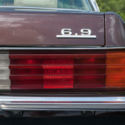 1979 Mercedes Benz 450SEL 6.9,One of 576 examples imported to US in 1979
1979 Mercedes Benz 450SEL 6.9,One of 576 examples imported to US in 1979
Mileage: 63,123
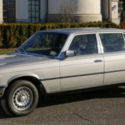 1979 mercedes-benz 450sel
1979 mercedes-benz 450sel
Mileage: 49,352
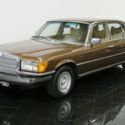 1979 Mercedes-Benz 450SEL 6.9
1979 Mercedes-Benz 450SEL 6.9
Mileage: 66,700
 1979 Mercedes Benz 450SEL W116
1979 Mercedes Benz 450SEL W116
Mileage: 147,582
 1979 Mercedes-Benz 450SEL 6.9 *$479 PER MONTH!*
1979 Mercedes-Benz 450SEL 6.9 *$479 PER MONTH!*
Mileage: 66,700
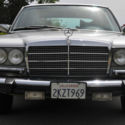 1979 Mercedes-Benz 450SEL Silver V8 Automatic
1979 Mercedes-Benz 450SEL Silver V8 Automatic
Mileage: 178,281
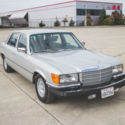 1979 Mercedes-Benz 450SEL 6.9 Sedan 4-Door 6.8L
1979 Mercedes-Benz 450SEL 6.9 Sedan 4-Door 6.8L
Mileage: 143,630
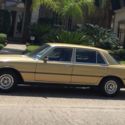 1979 Mercedes-Benz 450SEL 100,727 Miles Gold V8 Automatic
1979 Mercedes-Benz 450SEL 100,727 Miles Gold V8 Automatic
Mileage: 100,727
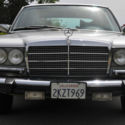 1979 Mercedes-Benz 450SEL Silver V8 Automatic NO RESERVE!
1979 Mercedes-Benz 450SEL Silver V8 Automatic NO RESERVE!
Mileage: 178,281
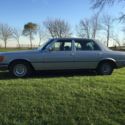 1979 Mercedes 450sel 6.9 Euro Model 66k Miles ! W116 chassis
1979 Mercedes 450sel 6.9 Euro Model 66k Miles ! W116 chassis
Mileage: 66,354
